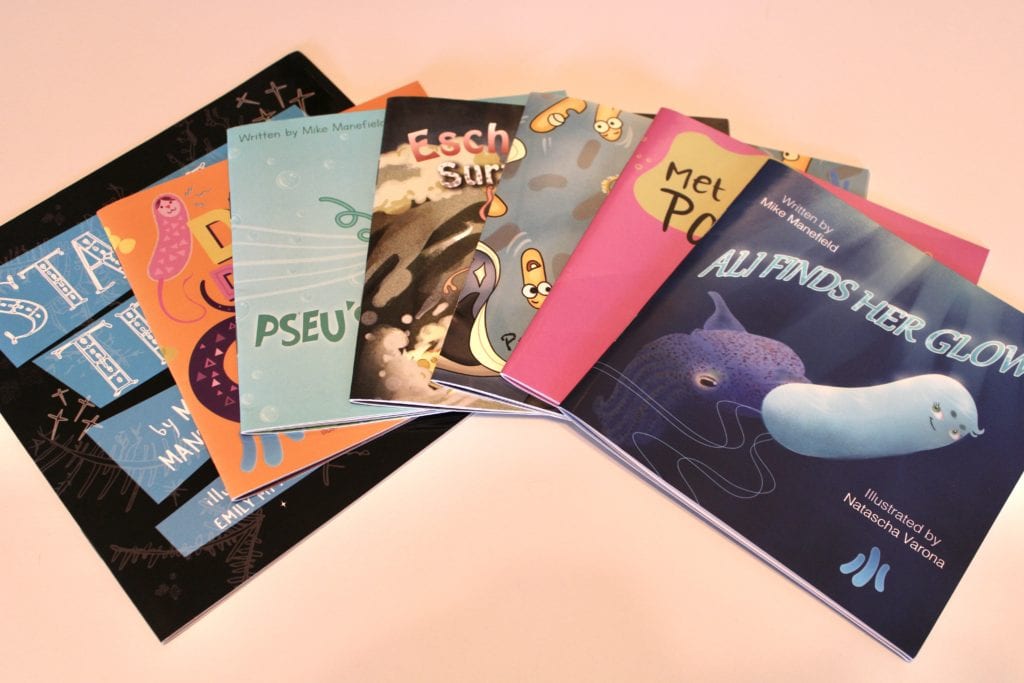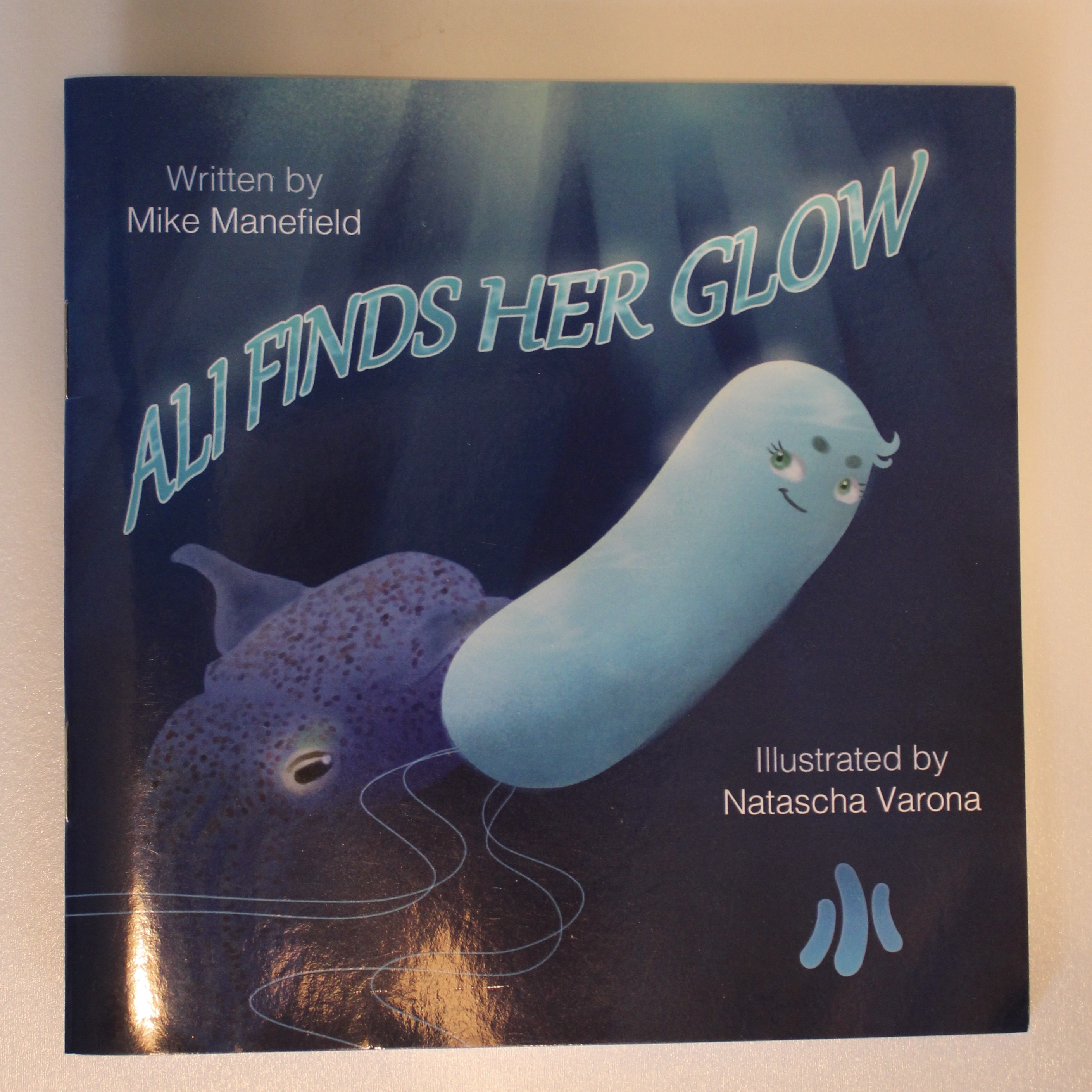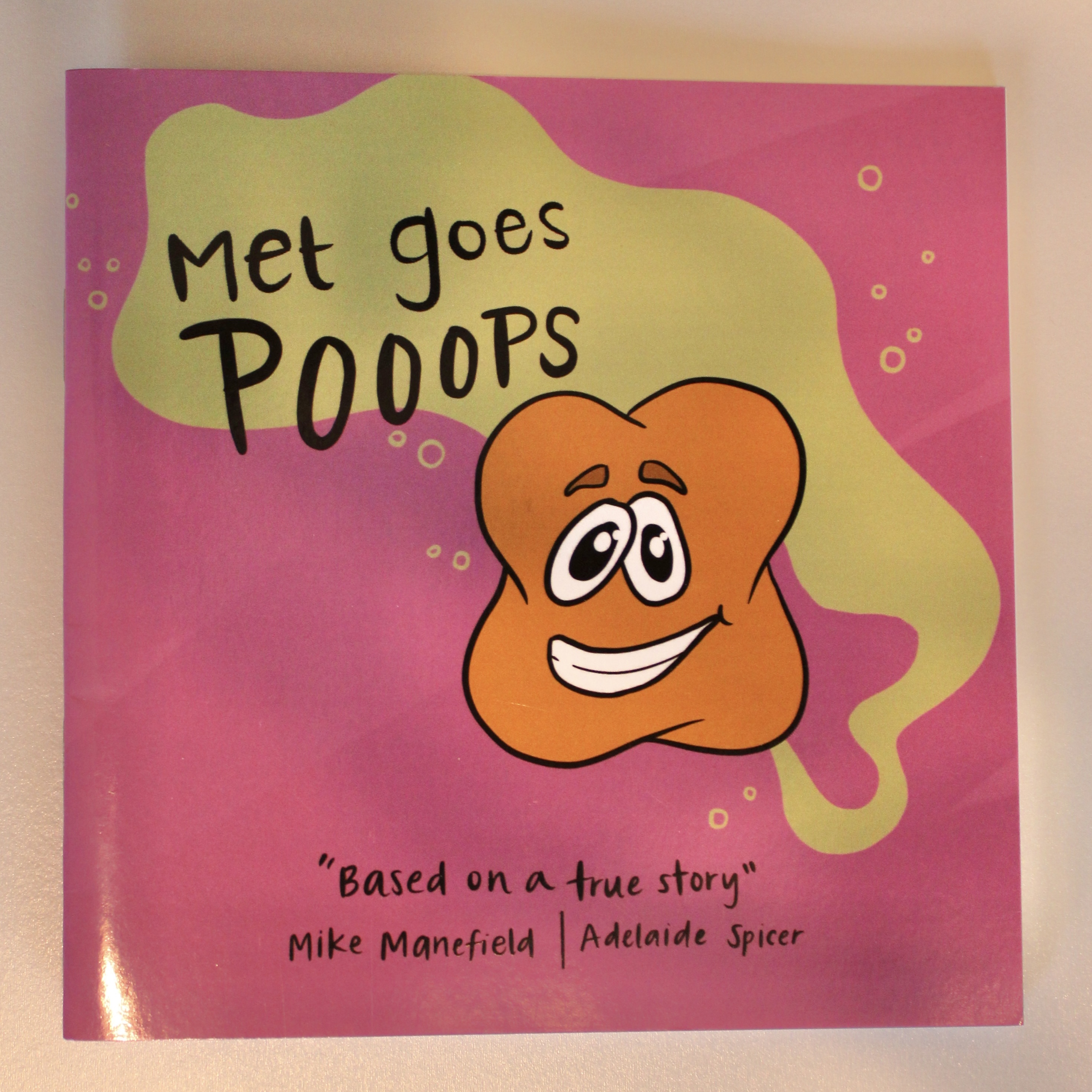How do you explain microbiology to a child?
It’s an abstract topic since you can’t readily see microbes due to their size. So, to help your kids visualize microbes, you can read them a children’s book specifically about microbiology.

I’ve featured a few excellent microbiology books for kids before on Joyful Microbe. But after I found out about Dr. Mike Manefield, a microbiologist who writes children’s microbiology books, I knew I needed to chat with him. He’s a full-time professor at the University of New South Wales in Sydney, Australia, and writes these incredible books as a hobby. His publishing company is called Micronovo.
His desire with these books is to communicate the complex stuff of microbiology and share it with his friends, family, especially his children, and the world so they can understand why the microbes are so cool.
Grab one of these microbiology books written by a microbiologist to help your kids understand the importance of microbes in our world. Learning the concepts from these books will equip them early in life with a well-rounded view of the microbial world, seeing both the good and the bad, so they can make educated, science-based decisions as they grow.
Topics covered In this episode:
- Micronovo: books about microbiology for children
- The microbes in the books
- Summaries of three Micronovo books
- At-home microbiology activity: biodegradation
Listen to my episode with Dr. Mike Manefield
.redcircle-link:link {
color: #ea404d;
text-decoration: none;
}
.redcircle-link:hover {
color: #ea404d;
}
.redcircle-link:active {
color: #ea404d;
}
.redcircle-link:visited {
color: #ea404d;
}
Powered by RedCircle
Or listen on Apple Podcasts, Google Podcasts, or Spotify
Micronovo: books about microbiology for children
Writing microbiology books for kids is something Mike considers a hobby. The books, he says, share similarities with Mr. Men and Little Miss, but bacteria feature as characters rather than random shapes.
The Micronovo books are all geared toward kids under the reading age of four years old for bedtime stories — they have excellent illustrations. But he also wanted to provide books that would help children in the first few years of their reading life. So, they work well for children ages four to eight.

But Mike says he also reads them to his university students in lectures “to get their minds working at that scale, imagining what the world is like at a microscopic scale.” And I enjoyed them too when Mike sent me a stack of books in the mail before the interview!
The structure of the Micronovo books
The structure of the books facilitates learning about real-life microbes, too, because each one highlights a different organism that plays a key role in our lives. And at the end, you can find scientific information about the microbe, which provides some helpful context to the story.
“The intent with the books was actually to communicate something real about microbiology. So, that’s why I have on the front of them ‘based on a true story,’” says Mike. What’s so perfect about the microbial world as subject matter for children’s book is that “you don’t really have to use your imagination to make it really wild because the microbial world is just that wild. It is very sci-fi.”
It mattered to him to create accessible content for children and reinforce at the end for teachers or parents that these are real organisms with scientific names. “You can get a little lesson out of every book — it’s not just a fun little story with great pictures. You learn something about the world that you’re living in.”
I like the added scientific info at the end because it helps ground the book. And it’s a great starting point for further exploration into the subject. If you find something fascinating in the books, you can start to look into it more online because you have the organism’s scientific name.
The microbes in the books
When asking Mike how he chose the different organisms for the books, he says, “well, they kind of chose themselves in a way.” Each one tells a story of some important or fascinating aspect of microbiology. So, the specific bacteria function as a “vehicle” to illustrate the phenomenon.
While working with the illustrators, Mike used his own “set of rules” for what he considered was “accurate” or not. “I like it to be accurate. But of course, the microorganisms have faces and use their flagella like legs.”
The microbes in the books have personalities, which Mike felt was important for conveying how microbiologists begin to feel about their specific organism of study after working with it for years. “For a lot of microbiologists that work on a pet organism, that organism has a personality. And I wanted to try and get other people thinking that way about microorganisms.”
About the name “Micronovo” and the logo
The name of the publishing company Mike founded is Micronovo, which means “new microbiology.” “When I started doing this, it was something nobody had done before, writing kids books about microbiology. So, it was just a new insight into microbiology.”
And the logo Mike is very proud of: it’s in the shape of an “M” with three bacterial cells. But it also looks like a Chinese character for water and for small.
Summaries of three Micronovo books
Here is a sampling of a few Micronovo books, what they are about, and what organisms they feature.
Ali Finds Her Glow: about bioluminescence and Aliivibrio fisheri

Ali Finds Her Glow tells the story of the microbe Aliivibrio fisheri (commonly known as Vibrio fisheri), a marine bacterium with the incredible ability to glow via bioluminescence and lives in the squid light organ in symbiosis with it.
In this bacterium, the energy-consuming process of luminescence occurs through the phenomenon quorum sensing. It helps the bacteria decide whether they should illuminate or not (quorum sensing can be used for other processes too). If an individual bacterial cell luminesces, they will waste energy because no one can see it. But when the bacteria are in a group, and they luminesce, it’s visible. And this process serves a purpose: symbiosis with the squid by providing it with camouflage.
These quorum sensing bacteria produce chemicals that diffuse out of the cell. As single cells, the chemicals diffuse away. But in large numbers (billions of cells), the chemical builds up inside the squid’s light organ and activates the genes responsible for transforming the chemicals into light.
What’s remarkable is that it’s a system based on cooperation where the bacteria essentially work together. They go from unicellular behavior to multicellular behavior. Mike emphasizes that “cooperative traits are generally more successful than competitive traits,” so this book has ethical and moral lessons about the importance of behaving in cooperation. “I think it’s really fascinating that bacteria are social creatures,” says Mike, “and they change their behavior, whether they’re an individual floating around or part of a big group.”
So, it’s pretty mind-blowing that organisms we think of as simple are using these sophisticated mechanisms to cooperate and that it works to their benefit more than competition.
One of my favorite parts of the book is when it describes how this phenomenon of quorum sensing leads to bioluminescence. It says, “Before long, the bacteria started to sing a chorus of chemical verse spread amongst the festivities. And then the most extraordinary thing happened…” Also, the illustrations by Natascha Varona perfectly capture the essence of glowing bioluminescent bacteria.
Pelagi Emperor of Earth: about the most abundant organism

Pelagi Emperor of Earth introduces the most abundant organism on our planet, Pelagibacter ubique, which lives in the ocean. The discovery of this organism occurred because of the “molecular revolution in microbiology.” The way microbiologists traditionally discovered new microbes depended on agar plates to grow them. But this story tells us about one of the first organisms discovered before being grown in the laboratory.
Scientists in the 80s were extracting DNA from the environment from marine samples to identify and find new microbes. They started seeing DNA sequences for organisms nobody had seen before or been able to cultivate in the laboratory. One was massively abundant: Pelagibacter ubique. “I just thought it was something the world should know that the most abundant organism on the planet is something that nobody’s ever heard of.”
With it being the most abundant, you’d assume it serves a purpose on the planet. And it does: P. ubique plays a significant role in biogeochemical cycling. Biogeochemical cycling describes the concept of the cycling of the chemicals in the world, including the carbon cycle, the nitrogen cycle, and the phosphorous cycle. “Microbes are really the engineers of these cycles where chemicals are transformed into certain things and then ultimately transformed back into what they originally were. And so our survival is dependent on these biogeochemical cycles,” says Mike.
Met Goes Pooops: about domain archaea

Met Goes Pooops highlights the microbes that fall in the domain Archaea and is about the organism Methanosarcina barkeri.
The three main branches of the tree of life are eukaryotes, bacteria, and archaea. We fall in the eukaryotes with all other animals, plants, and fungi. The bacterial branch is well known, but the third branch is not. Even scientists didn’t know archaea existed until the 1980s.
Its discovery occurred through DNA sequencing, as we discussed above, rather than growing it on agar plates. Archaea look like bacteria, but their evolutionary history differs. “I didn’t have any books that included archaea, despite the fact that these organisms are also massively abundant on the planet and do important things,” says Mike. “So I decided to write an archaeal book.”
Another funny thing happened while Mike was writing the book. It starts with two cows jumping on a trampoline. But initially, they were children until he figured out that M. barkeri doesn’t inhabit the gastrointestinal tract of humans. So he had to ask the illustrator, Adelaide Spicer, to switch out the children and put in cows. “The microbes have to behave how they normally behave in the books, but cows are allowed to jump on trampolines.”
Can we expect more Micronovo books?
When asking if Mike has more books in the works, he says he’s already written more! Here are some topics we can look forward to reading about: bioremediation, Geobacter and extracellular electron transfer, Serratia liquefaciens (produces extracellular enzymes to degrade a cucumber), and spore formation.
At-home microbiology activity
Comparing biodegradation with and without microbes
- Select something biodegradable (fruit or vegetables)
- Chop it up
- Place it into two different jars
- Add some water
- Add a small amount of soil (not so much that jar gets hard to see through) as an inoculum of microbes
- Leave one jar alone and change the conditions of the other to inhibit the growth of the microbes
Ways to inhibit microbial growth:
- Water content: lower the water content by adding a large amount of salt
- pH: add lemon juice to lower the pH and make it more acidic
- Temperature: increase the temperature using an oven by basically “baking” the microbes for 15-30 minutes
- Oxygen: remove the by putting the jar in a larger jar, light a tea candle, screw on the lid, and it will consume the oxygen and burn itself out
- Your choice: come up with your own way of inhibiting microbial growth
Observe over time the decomposition of the biodegradable item with and without microbial activity.
Safety Warning: Be careful because some microorganisms in the environment are pathogenic, and they can cause you harm in large numbers. Generally, they’re in small numbers and are not an issue. But since you’re doing an incubation with this activity, they can get to a higher abundance. So, wash your hands when working with these jars. And it’s best to run this activity outside, not to get your face close to it when observing the growth, and throw the jars away when you’re finished.
Links & Resources
This post contains affiliate links — see my disclosure policy.
- Buy one of Mike’s Micronovo books (use code Joyful21 for a 30% discount at checkout)
- More great children’s books about microbiology
- List of great microbiology books for all ages (includes Mike’s recommendation, I Contain Multitudes by Ed Young)
- Gregory Crocetti’s Small Friends Books (other great kids books on microbiology Mike Recommends)
- Giant Microbes (plush microbes)
- Magical Microbes (activities)
- Book Illustrators: Adelaide Spicer and Natascha Varona
Connect with Dr. Mike Manefield
Prof Mike Manefield completed undergraduate and PhD degrees in environmental science, majoring in microbiology back to back from 1992 to 2000. His PhD was on algal metabolite interference with quorum sensing. He took up a postdoc position in the Centre for Ecology and Hydrology in Oxford in the UK, developing RNA-based stable isotope probing. Since then, he has worked at the University of New South Wales on organochlorine biodegradation, biogas production, and biofilm formation. He has published over 120 papers with over 10,000 citations, co-founded the Joint Academic Microbiology Seminars (JAMS), and published a series of illustrated children’s books on microbiology.
Connect with Dr. Mike Manefield: Facebook, Twitter (@mikemanefield), and Twitter (@Micronovo1)
The post Micronovo’s Microbiology Books for Kids: Dr. Mike Manefield appeared first on Joyful Microbe.


